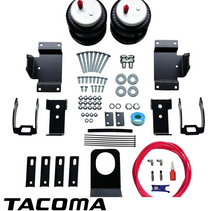Air bags have become a crucial component of vehicle safety systems, significantly reducing the risk of injury during accidents. Understanding the evolution of air bags provides insight into how automotive safety has advanced over the years. This article will explore the history, technology, and future of air bags, highlighting their importance in modern vehicles.

Early Innovations in Air Bags
The concept of air bags dates back to the 1950s, when engineers began to explore ways to protect passengers in the event of a collision. The first air bag systems were rudimentary and primarily designed for experimental vehicles. These early innovations laid the groundwork for the sophisticated air bag systems we see today.
- 1950s: Initial concepts and prototypes developed.
- 1970s: First commercial air bags introduced in select vehicles.
- 1980s: Widespread adoption of air bags in passenger cars.
How Air Bags Work
Modern air bags are designed to deploy rapidly during a collision, providing a cushion that absorbs impact. The deployment mechanism relies on sensors that detect sudden deceleration. When an accident occurs, these sensors trigger the air bag to inflate within milliseconds. This rapid response is critical for minimizing injuries.
There are various types of air bags, including:
- Frontal air bags: Protect the driver and front passenger during head-on collisions.
- Side air bags: Offer protection in side-impact crashes.
- Curtain air bags: Deploy from the roof to shield passengers from side impacts and rollover accidents.
Modern Safety Features of Air Bags
Today’s air bags are equipped with advanced technology that enhances their effectiveness. Features such as dual-stage deployment and weight sensors allow air bags to adjust their inflation based on the severity of the crash and the size of the occupant. This adaptability helps to reduce the risk of injury from air bag deployment itself.
Moreover, the integration of air bags with other safety systems, such as electronic stability control and anti-lock braking systems, creates a comprehensive safety net for drivers and passengers alike. The evolution of air bags has not only improved vehicle safety but has also influenced regulations and standards in the automotive industry.
The Future of Air Bags
As technology continues to advance, the future of air bags looks promising. Innovations such as inflatable seat belts and external air bags are being explored to further enhance safety. These developments could revolutionize how air bags function, making vehicles even safer for occupants.
For those interested in enhancing their vehicle's suspension and load-carrying capabilities, consider exploring  . These air bags can provide additional support and stability, ensuring a smoother ride.
. These air bags can provide additional support and stability, ensuring a smoother ride.
Conclusion
In summary, the evolution of air bags from early innovations to modern safety features illustrates the automotive industry's commitment to passenger safety. As technology continues to develop, we can expect air bags to become even more effective, ultimately saving lives and reducing injuries on the road.








